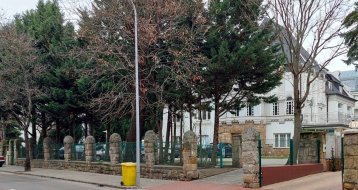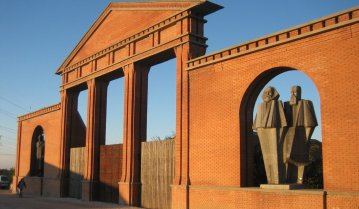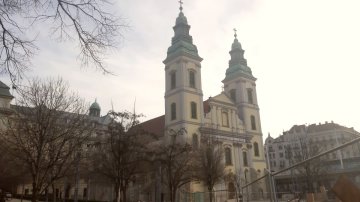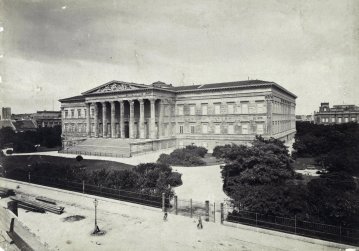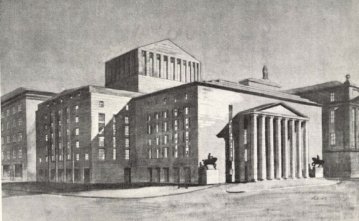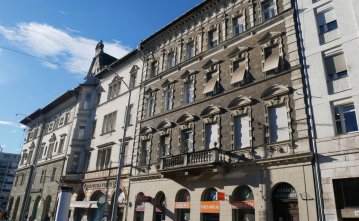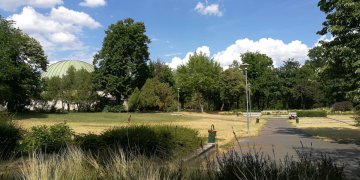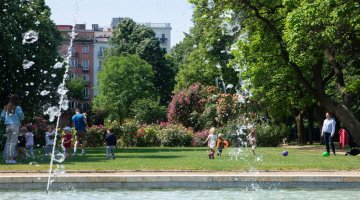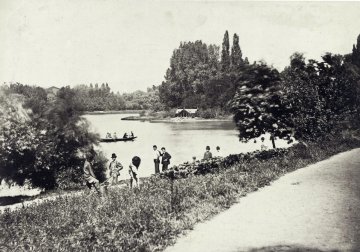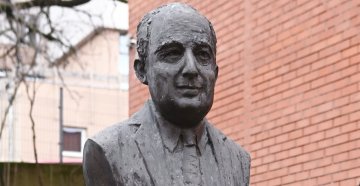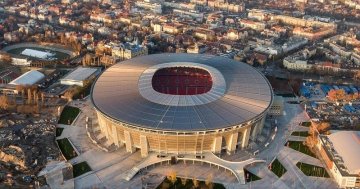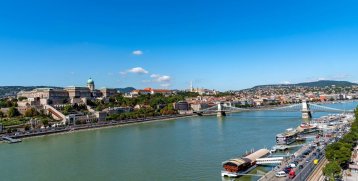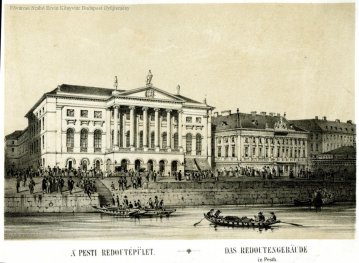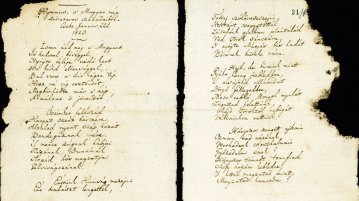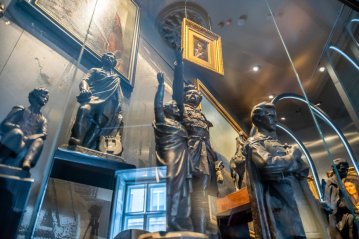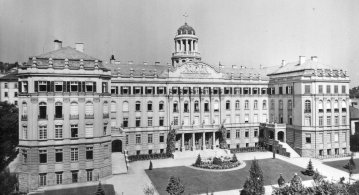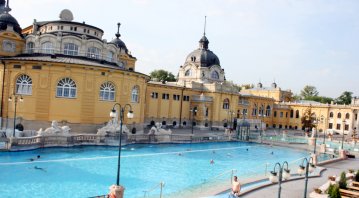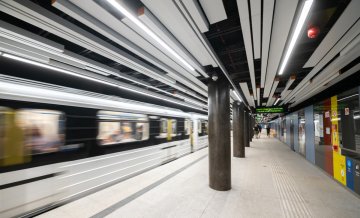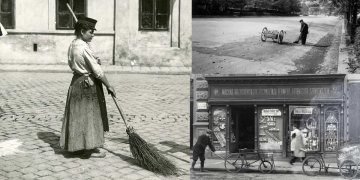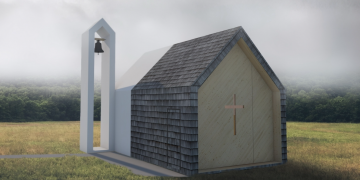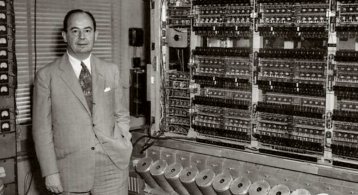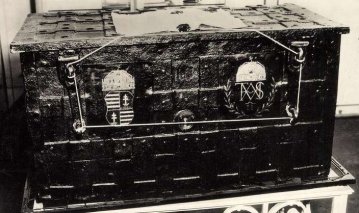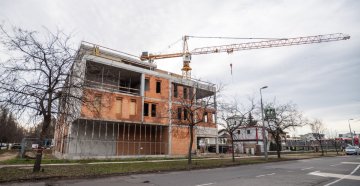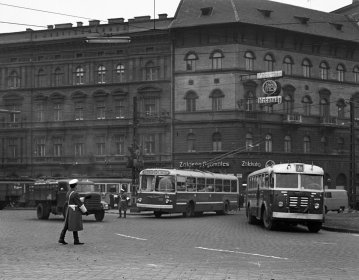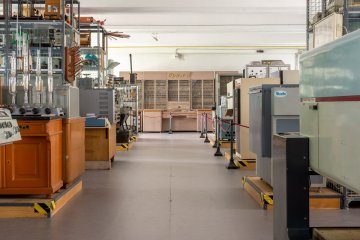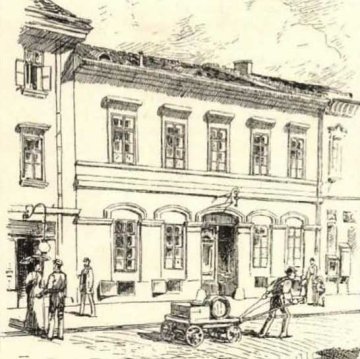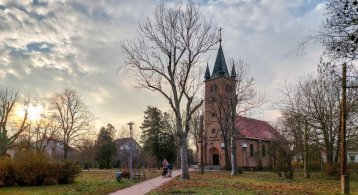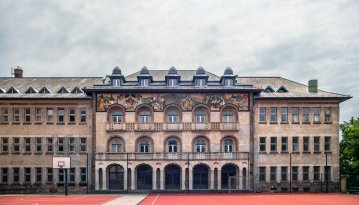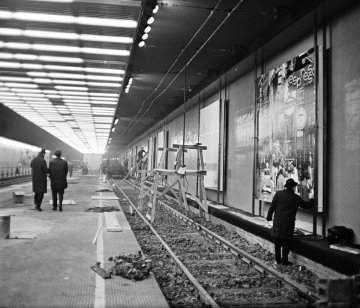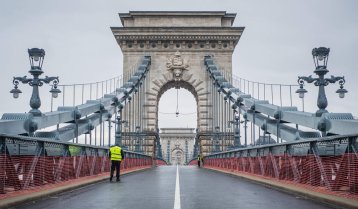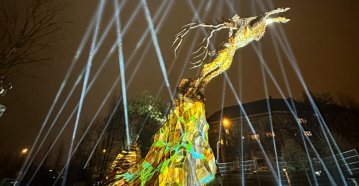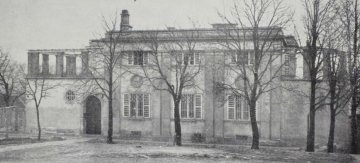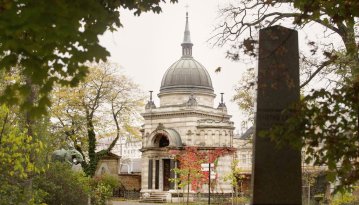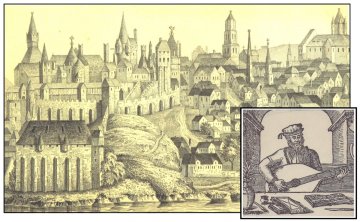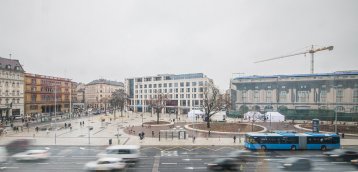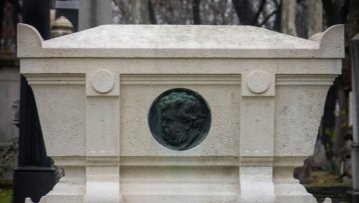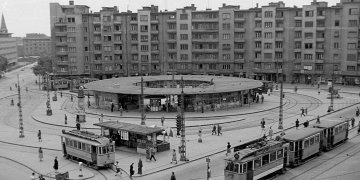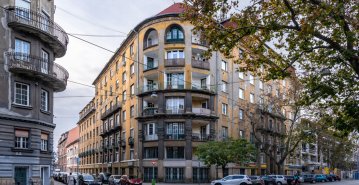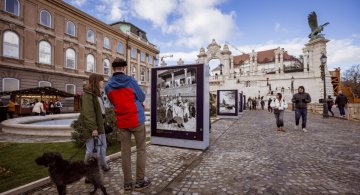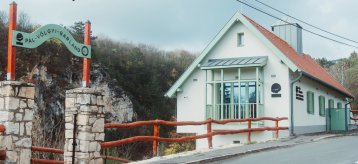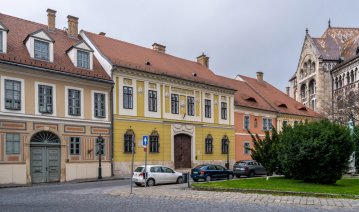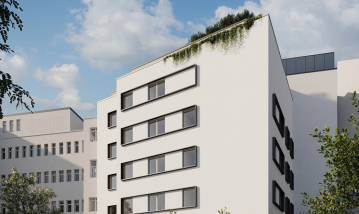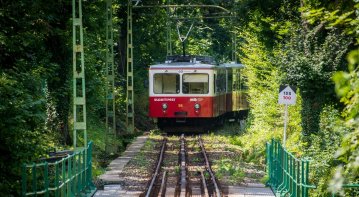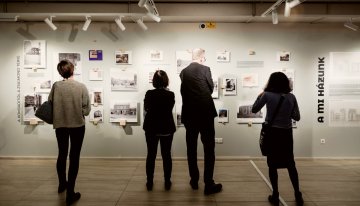 The Bridge Report, which brought a turning point in the history of Budapest
A travel report that changed the history of Pest and Buda, as well as Hungary. The little book contributed to the change of half a thousand years of legal customs and the implementation of an investment of unprecedented size and technical quality. This book was The Bridge Report [Hídjelentés in Hungarian].
The Bridge Report, which brought a turning point in the history of Budapest
A travel report that changed the history of Pest and Buda, as well as Hungary. The little book contributed to the change of half a thousand years of legal customs and the implementation of an investment of unprecedented size and technical quality. This book was The Bridge Report [Hídjelentés in Hungarian].
Search result
Witnesses of an exciting era - A mix of styles on the turn of the century villas
January 27, 2023 at 9:00 AM
The term turn of the century usually refers to the end of the 1800s and the beginning of the 1900s, the last two decades of happy times of peace. This period brought amazing diversity to the field of architecture, which appeared not only in large-scale public buildings but also in smaller residential buildings and villas. An excellent example of this is provided by some early villas of a little-known architect, Jenő Lechner, several of which were taken over by their new owners in 1908, i.e., one hundred and fifteen years ago.
Memento Park has been classified as one of the most endangered heritage sites in Europe
January 26, 2023 at 1:00 PM
The European heritage protection organisation Europa Nostra and the European Investment Bank Institute have selected 11 European heritage sites, seven of which could be included in the program to help save European heritage. The Memento Park in Budapest and the building of the Ottó Herman Museum in Miskolc are also on the list of must-be-saved sites.
Where time began in 1048: the 975th anniversary of the founding of the parish is celebrated in the Inner City Church
January 25, 2023 at 4:00 PM
In 2023, the Budapest Inner City Parish Church of the Blessed Virgin Mary will celebrate the 975th anniversary of its foundation: the congregation was established in 1048, during the time of Andrew I. On the occasion of this holiday, a commemorative year was announced in the Inner City Church, which is the oldest medieval monument in Pest.
The central bank issued a collector coin on the 200th anniversary of the writing of the National Anthem
January 25, 2023 at 2:00 PM
On the occasion of the 200th anniversary of the writing of the National Anthem, the Hungarian National Bank (HNB) issued silver collector coins with a face value of 15,000 HUF and non-ferrous metal ones with a face value of 3,000 HUF. On the obverse of the coin, the portrait of Ferenc Kölcsey can be seen, as well as the inscription Hymnus according to the original spelling and the year 1823 indicating the year of creation of the work.
It became the most important work of classicist architecture: the new National Museum opened its doors to the public 175 years ago
January 24, 2023 at 5:00 PM
When the country's most important classicist building, the National Museum designed by Mihály Pollack, was completed in 1847, it took time to properly house the artefacts and books collected over the decades and to create the exhibition spaces. The classicist palace opened to the public 175 years ago, on 24 January 1848, but at that time no one thought that in less than two months the building would become the scene of events that would make it a national symbol forever.
Gone are the boards that once meant the world - Béla Lajta and the first National Theatre
January 23, 2023 at 10:00 AM
Béla Lajta was one of the most brilliant figures in the history of Hungarian architecture, who fortunately was properly appreciated even in his own time, and posterity cherishes his memory with respect. A long series of studies and several books have already been published about his life and work, and three years ago Pestbuda also commemorated the 100th anniversary of his death. Today Hungarians celebrate the anniversary of his birth as he was born 150 years ago. On this occasion, Pestbuda now presents a topic close to his heart, his designs for the former National Theatre.
The house on József Boulevard, where Feri Neumann became Ferenc Molnár
January 20, 2023 at 10:00 AM
Ferenc Molnár, who was born 145 years ago this January, is one of the most well-known and beloved figures in Hungarian literary history abroad. Pestbuda also wrote about him several times in connection with his novels, dramas and connections to the capital. The writer's own life was also like a novel, full of twists and turns, successes and failures. The house on József Boulevard, which was built by his father and where he lived for the longest time in the capital, was the most important symbol of permanence.
Népliget's landscape architecture idea competition has ended
January 19, 2023 at 7:00 PM
Sixteen entries were received for Népliget's landscape architecture idea competition, which closed today. Although the evaluation will begin soon, the renovation of Budapest's 130-hectare public park will have to wait a few more years: the implementation of the first phase in the capital's Dezső Radó Plan was only planned for 2027.
Mini forest, bushes, rows of trees: green developments from Főkert in 2023
January 19, 2023 at 5:00 PM
This year, Főkert will renew several rows of trees in Budapest, plant 12,000 trees and make a mini-forest. Several previously started works are continuing, including park renovations, and benches are being placed in the small forests planted last year.
From swamp to public park: Donations were requested for tree planting in the City Park 205 years ago
January 19, 2023 at 11:00 AM
Two hundred and fifty years ago, on the site of today's City Park, on the outskirts of the city, there was a swamp and an ox pasture. Although there were attempts to afforest the area, it also happened that the planted saplings were simply nibbled by the oxen. The plans for the development of the Park were completed by 1817, but the money needed for its implementation was lacking. Therefore, 205 years ago, fundraising began for the creation of the public park.
The János Neumann memorial year has begun
January 19, 2023 at 9:00 AM
Óbuda University announced the launch of the János Neumann memorial year yesterday, the world-famous scientist's statue was laid with a wreath in the institution's garden, and an all-day scientific conference was held. On the occasion of the 120th anniversary of the mathematician's birth, the Neumann Society is holding countless programs and events until the end of December 2023, with which it tries to introduce the Hungarian public to everything the world owes to János Neumann, who was born in Budapest and died in Washington.
The capital would be suitable for hosting the Olympics - according to Balázs Fürjes
January 18, 2023 at 1:00 PM
If, based on the previous evaluation, Hungary would have been capable to host the Olympics, then it is even more capable to do so now, Balázs Fürjes stated. According to him, in addition to the completed sports facilities, the hotel infrastructure is also suitable for such an event.
A tender is announced for the presentation of the values and identity of the city districts
January 17, 2023 at 6:30 PM
In connection with the 150th anniversary of the unification of Pest, Buda and Óbuda, the Budapest Cultural Centre has announced a tender to which cultural institutions maintained by the district local councils can apply. Support can be obtained for the organisation of cultural and artistic programs and events that express the identity of the district and present the specificities of the district.
In the wake of the disappeared Redoute - Pest's first place for merriment existed for only 16 years
January 17, 2023 at 11:00 AM
At the beginning of the 19th century, the dynamically developing city of Pest desperately needed an elegant ballroom in which high-quality dance parties could be held that met the needs of the high-class audience. The first site in the capital that was built for this purpose was the Redoute, the predecessor of today's Vigadó of Pest, but the classicist palace, handed over 190 years ago, on 13 January 1833, decorated the Danube bank of Pest for only 16 years.
The birthday of the National Anthem: the Ministry of Culture invites people to a joint recitation
January 16, 2023 at 12:30 PM
On the Day of Hungarian Culture, 22 January, on the 200th anniversary of the National Anthem, 200 children, 100 from the motherland and 100 from abroad, will recite Hungary's national poem on the main steps of the Parliament. At the same time, one of the most important Hungarian poems of all time will be recited in four locations across the border, as well as in Ferenc Kölcsey's former residence, Szatmárcseke, and in Veszprém, which has been awarded the title of European Capital of Culture.
The new Petőfi exhibition opened at the PIM addresses the 21st-century people
January 14, 2023 at 2:30 PM
In honour of Petőfi, who was born 200 years ago, a new, large-scale permanent exhibition opened today, 14 January, at the Petőfi Literary Museum (PIM). The institution's undisclosed goal was to bring the poet's work closer to the people of the 21st century, to our everyday lives: the importance of home, the importance of friends or the sacrifice made for our loved ones are all topics that we can easily identify with. Artefacts, special scenery and multimedia tools also help us to get familiar with the work of the poet. Topics that are still relevant today, in Petőfi's interpretation.
The lover of historical styles - Gáspár Fábián passed away 70 years ago
January 13, 2023 at 9:00 AM
The second half of the 19th century was the great era of the revival of historical styles, which is called historicism in technical terms. Although the different tendencies of Art Nouveau ended its dominance around the turn of the century, it remained on the stage and even experienced a second boom from the beginning of the 1920s. One of the most prolific architects of this period was Gáspár Fábián, who died 70 years ago.
The Széchenyi Thermal Bath is among the seven best thermal baths in Europe
January 12, 2023 at 7:30 PM
According to a British newspaper, the Széchenyi Thermal Bath in Budapest is one of the best thermal baths in Europe. In the compilation published yesterday, the bath's Neo-Baroque building, its medicinal water and its 21 pools are mentioned.
The Deák Square and Ferenciek Square metro stations will be handed over on 23 January
January 11, 2023 at 6:00 PM
The Ferenciek Square and Deák Ferenc Square metro stations will be opened to passengers on 23 January. According to the plans, the metro will run on the entire line from the middle of March, and from the middle of May, passengers will also be able to use the last renovated Nagyvárad Square and Lehel Square stations.
These were the public cleanliness rules in Budapest 145 years ago
January 11, 2023 at 11:00 AM
Budapest adopted strict regulations 145 years ago to make the city cleaner. It was forbidden to throw garbage on the street, it became forbidden to shake the dust rag out of the street window, and it was forbidden to urinate on the street. The horse-drawn carriage stations serving transportation had to be disinfected daily, and horse manure could only be carried away in closed carts. Watering the sidewalks was abolished to protect women's clothes, and it was forbidden to throw melon rinds in the street, according to the capital's new public cleanliness regulations, which were adopted in January 1878.
Donations are being collected for the construction of the chapel in Anna Meadow
January 10, 2023 at 2:00 PM
A chapel with a small floor area of barely thirty square metres was planned for Anna Meadow in the 12th District. If the donations are collected, next year a mass place that matches the landscape can be built in the Hegyvidék.
A memorial year for János Neumann was announced for 2023
January 10, 2023 at 11:00 AM
On the occasion of the 120th anniversary of the birth of the mathematician János Neumann, the Neumann Society announced a commemorative year for 2023, the aim of which is to make the world-famous mathematician's legacy known to as many people as possible. The famous scientist was born in the city centre, studied in Városligeti Avenue, went to university in Buda, and his grave is in the United States.
Hidden in the Strong Room - This is how the Holy Crown was kept in Buda Castle
January 9, 2023 at 1:30 PM
Today, it is taken for granted that anyone can view the Holy Crown of Hungary. But for centuries it was stored in a closed chest with iron straps, protected by keys and seals, and could only be taken out on special holidays, such as the coronation in 1867, the millennium celebration in 1896 or the Eucharistic Congress in 1938. On the occasion of the return of the fearfully guarded national treasure 45 years ago, Pestbuda presents the conditions under which the crown was guarded in Buda Castle.
The Bulgarian Cultural and Education Centre in Ferencváros held a topping-out ceremony on Epiphany Day
January 6, 2023 at 8:30 PM
The Bulgarian Cultural and Education Centre is to be built on the plot opposite the Bulgarian community centre in the 9th District, near the Orthodox church. The building's topping-out ceremony was held on Epiphany Day, 6 January, which coincides with the Orthodox Christmas Day.
The Holy Crown has returned home – Hungarian relics were taken off the American plane to the sounds of the Rákóczi March
January 6, 2023 at 10:00 AM
On 5 and 6 January 1978, Budapest and Hungary became the centre of attention in the international press. The reason for this was that it was then that the United States of America returned the Holy Crown to the Hungarian nation. The Holy Crown was solemnly received in Budapest.
BKV was established 55 years ago - There was a ticket inspector on all vehicles and one could travel cheaply
January 4, 2023 at 11:00 AM
On 1 January 1968, Budapest Transport Company took over the capital's public transport from three other companies. Until then, Budapest's trams, buses, suburban railways and other means of transport were operated by three independent companies, the Metropolitan Electric Railway Municipal Company, the Metropolitan Bus Municipal Company, and the Metropolitan Suburban Railway Municipal Company. In addition, the new organisation absorbed the Municipal Shipping Company.
The Museum of Technology was founded three times - Unparalleled Hungarian memories are preserved in the collection created 50 years ago
January 2, 2023 at 5:00 PM
Fifty years ago, the Hungarian Museum of Technology was founded for the third time. According to the founding document dated 1 January 1973, its task is to collect and present Hungarian natural science and technical memorabilia. The museum preserves such special treasures as Ányos Jedlik's electric motor created in 1828 and his electric car made in 1855, the world's first carburettor engine, the first Hungarian computer and the very first Gömböc.
This is how Sándor Petőfi and Júlia Szendrey lived in Pest after their honeymoon
January 1, 2023 at 6:30 PM
Sándor Petőfi, who became a young, patriotic poet, moved from sublet to sublet in Pest in the early 1840s, but love and marriage changed his life: he went from subtenant to main tenant. Pestbuda recalls these locations on the 200th anniversary of the birth of the great national poet, showing in which street, in which house, and under what conditions he lived with his young wife after the marriage and the honeymoon.
This is how Budapest developed in 2022 - Several public buildings were handed over this year
December 31, 2022 at 11:00 AM
2022 will almost certainly go down in history with a negative tone, as it was burdened by a series of crises from which Hungary could not extricate itself. Nevertheless, Budapest developed very nicely, many investments were completed this year: several new buildings were completed and many monuments were restored. On the last day of the year, Pestbuda looks back and summarises the events of the year.
Háros, the beauty of the southern ends
December 29, 2022 at 3:00 PM
The capital's natural beauties are quite scattered. This is perhaps fortunate in that every district has at least one park, forest or waterfront. During this trip, Pestbuda will take a look at the southernmost part of the main branch of the Danube near Budapest. The region where the wide, slow-flowing Danube has been touching the quiet settlements for thousands of years. This region is the most beautiful part of the 22nd District along the Danube: Háros.
A little Transylvania on the edge of Budapest - Lutheran churches of Rákosmente
December 24, 2022 at 3:00 PM
The tiny Rákos Stream flowing through the edge of Pest gave its name to a series of quarters in the 16th and 17th Districts, including Rákosliget, Rákoskeresztúr, Rákosszentmihály, Rákoscsaba and Rákoshegy. There is also a great similarity in their built environment, they show a rural, small-town image. Moreover, they also share a high degree of similarity between their evangelical churches: they are reminiscent of Transylvanian fortified churches.
The foundation stone of the new gymnasium of the Baár-Madas Reformed High School in the 2nd District was laid
December 23, 2022 at 6:00 PM
On 19 December, the foundation stone of the newly constructed gymnasium of the Baár–Madas Reformed High School, Primary School and Student Dormitory in the 2nd District was laid. The new gymnasium is expected to be completed at the end of 2023.
The Batthyány Square terminus of the suburban railway was handed over 50 years ago
December 23, 2022 at 12:30 PM
The Budapest terminus of the suburban railway [HÉV] from Szentendre has been moved several times, most recently just 50 years ago, when it moved to its current location, Batthyány Square. The timing and the location were no coincidence either, as the suburban railway was able to connect to the metro this way which was also handed over at the time. The current terminus was handed over 50 years ago, but it may also change in the future.
"Life without music is incomplete and not worth living", said Zoltán Kodály who was born 140 years ago
December 18, 2022 at 11:00 AM
Zoltán Kodály is one of the greatest figures in Hungarian music literature, who was not only an exceptionally talented composer but also a researcher and teacher. He began his work as a folk song collector in 1905 and presented his own works to the public in 1910, and Psalmus Hungaricus, written in 1923, was a huge international success. His music pedagogy method is still used in education today. The composer's former home on Kodály Körönd now houses the memorial museum named after him.
The Chain Bridge has been handed over, but cars and pedestrians cannot drive over it yet
December 17, 2022 at 11:00 AM
From 16 December, the road on the Chain Bridge is available for those travelling with BKK vehicles, taxis, bicycles, motorcycles and mopeds. The bridge is scheduled to open to pedestrians in the fall of 2023.
The Miraculous Hind statue was handed over in the garden of the former Postal Palace
December 16, 2022 at 8:00 PM
The Miraculous Hind statue was inaugurated in the garden of the Hungarian National Bank Supervisory Centre and Money Museum, i.e., the former Postal Palace on Krisztina Boulevard. The symbol of the Money Museum, the five-metre-high work standing on a six-metre-high pedestal, which symbolises renewal, ascension, and abundance, can be clearly seen by pedestrians and motorists on Krisztina Boulevard from afar.
Scandalous background, sensational ending - The Lukács Villa on Ostrom Street is 100 years old
December 16, 2022 at 8:30 AM
The steep Ostrom Street, which opens into the Bécsi Kapu Square, is home to several valuable buildings, which are worthy of the prominent location with their sophisticated appearance. However, the history of the creation of the former Lukács Villa at number 5 is riddled with scandals, but this can also be attributed to the turbulent era. The walls of the villa, which was completed 100 years ago, hide this flaw, and to today's observer, they only tell about the designer's genius.
The death of Ábrahám Ganz caused a shock - He was the godfather of 64 factory workers' children, who all inherited
December 14, 2022 at 12:00 PM
Ábrahám Ganz, the respected manufacturer from Buda, committed suicide 155 years ago, on 15 December 1867. The Ganz Factory, barely more than 20 years old, was at the peak of its success, and Ganz himself was a recognised citizen of Buda. With his death, he left a huge void, as he had no heir who could have taken over the family business. However, the factory survived and rose to incredible heights.
A world star raised in Buda in the Middle Ages - memories of Bálint Bakfark and the street named after him
December 12, 2022 at 9:00 AM
In the heyday of the Renaissance, a lute artist educated in Buda went on a European tour to impress the rulers and noble courts of the continent with his brilliant music, even generating sympathy for the cause of the Kingdom of Hungary, which was languishing under the threat of the Ottoman Empire. As a student, Bálint Bakfark was able to see Buda just before the long Turkish occupation. His memory is preserved today by a small street, next to which the medieval city wall stretched.
The renovated Blaha Lujza Square was handed over - It was announced more than 5,5 years ago, it has now been realised
December 11, 2022 at 11:00 AM
On 10 December, the public could take possession of the renovated Blaha Lujza Square. The transformation of the square named after the "nightingale of the nation" was decided in 2017 by the General Assembly of Budapest, which allocated the necessary funds in March 2018. However, the actual work did not start until June 2021. The space that has just been handed over has turned out to be different in many ways than it was imagined five years ago.
The grave monument of Mihály Munkácsy in the Fiumei Road Cemetery to be renewed
December 9, 2022 at 3:00 PM
The tomb of Mihály Munkácsy, a creation of Ede Telcs, which is located in the Fiumei Road Cemetery and protected as a monument, is being renovated. According to the plans, the works will be completed by spring, and the renovated grave will be inaugurated on 9 May 2023, the 123rd anniversary of the painter's death.
Playwright Gergely Csiky, who was born 180 years ago, was remembered in the Fiumei Road Cemetery
December 8, 2022 at 3:00 PM
Playwright Gergely Csiky, the creator of Hungarian bourgeois drama, was commemorated on the occasion of the 180th anniversary of his birth in the Fiumei Road Cemetery. The tomb, which has been protected since 2001, is located in one of the artist's plots of the cemetery and has been fully reconstructed. On the side of the Neo-Baroque ornamental sarcophagus made by Károly Senyei, the portrait of Gergely Csiky in relief can be seen.
An emblematic building, the Mushroom at Móricz Zsigmond Square is 80 years old
December 8, 2022 at 12:30 PM
Újbuda's emblematic building, the Mushroom [Gomba], is eighty years old this December. The traffic pavilion erected in 1942 at Móricz Zsigmond Square performed its original function for sixty years until the tracks running around it were demolished. The building remained unoccupied. By the time it came under the ownership of the 11th District Local Council from the capital, it was dilapidated, dirty, and unworthy of its architectural value and the atomic sphere of the place. A design competition was launched to save it, as a result of which the contemporary public space was born in 2014, which satisfies both elegant, functional and cultural needs.
The capital launched a housing construction program during a crisis in the 1920s
December 7, 2022 at 11:00 AM
During the period of dualism in Budapest, most residential buildings were built by private investors, as there was a huge demand for them at that time: large crowds moved to the capital. The trend continued even after World War I, but at that time the economic environment was not nearly as favourable, so the capital itself launched a small flat construction program. Several buildings were completed by November-December 1926, the first residents moved in ninety-six years ago.
Traditions of a vanished world - This is how they prepared for the holiday in the Carpathian Basin
December 6, 2022 at 8:00 PM
The open-air photo exhibition, which opened on 6 December on the Danube-facing terrace of the Buda Castle and in the Castle Garden Bazaar, invites visitors to take a real trip back in time. The old photographs show the Christmas customs of the peoples of the Carpathian Basin, now unknown to many, leading the visitors to a vanished world, to the time of their great-grandparents.
The new visitor centre of the Pál Völgyi Cave was handed over
December 6, 2022 at 6:00 PM
A modern, interactive exhibition has been created in the new visitor centre of the Pál-Völgyi Cave, on Szépvölgyi Road in the 2nd District. Visitors can get to know the cave systems of Buda, the protected bat species of the area, as well as touch the rare rocks and minerals created in the caves. During the development, the reception area of the cave was renewed, and a training room was also created.
A walk through time - The houses in the Buda Castle tell the story of nearly 800 years of Jewish history
December 3, 2022 at 10:00 AM
Although the history of Budapest's Jews is as old as the city itself, it is less well-known how many places we can find memories of the community and how many houses preserve stories from the Middle Ages to the 21st century. The tour guide of the Buda Castle Walks of the Castle Headquarters has now provided an insight into this during the Shalom, Buda! castle walk to Pestbuda.
The foundation stone of the new building of the specialist clinic in Ferencváros was laid
December 2, 2022 at 3:30 PM
The foundation stone of the new building of the health clinic in the 9th District, Mester Street, was laid. The institution's existing building will be expanded with a 6-story, 3,000-square-metre wing. The building will be built using the most modern technology, will have a green roof, and will be heated by a heat pump. The new building is planned to be completed in the spring of 2024.
The cogwheel railway will not be eliminated
December 2, 2022 at 8:00 AM
Accepting the proposal of the people of Hegyvidék, the General Assembly of the Capital decided to support the renovation of the cogwheel and the extension of its route. So they will not eliminate the railway. During the renovation, transportation will be provided with a so-called demand-controlled telebus.
Our House, Our Street - The area around Frankel Leó Road, as seen by Koreans
November 29, 2022 at 7:00 PM
The exhibition that opened yesterday at the Korean Cultural Centre at 30-34 Frankel Leó Road in the 2nd District presents Frankel Leó Road in the 2nd District and its surroundings with nearly 200 archival images, periodical newspaper articles and blueprints. With the exhibition "Our House, Our Street" - by introducing the local history of the host country - the Koreans, as they said, want to build bridges between the two nationalities, hoping that the visitors will get closer to Korean culture.
 The Bridge Report, which brought a turning point in the history of Budapest
A travel report that changed the history of Pest and Buda, as well as Hungary. The little book contributed to the change of half a thousand years of legal customs and the implementation of an investment of unprecedented size and technical quality. This book was The Bridge Report [Hídjelentés in Hungarian].
The Bridge Report, which brought a turning point in the history of Budapest
A travel report that changed the history of Pest and Buda, as well as Hungary. The little book contributed to the change of half a thousand years of legal customs and the implementation of an investment of unprecedented size and technical quality. This book was The Bridge Report [Hídjelentés in Hungarian].
 Drama on the university wall - The heroic monument was planned 95 years ago
In the constant hustle and bustle of the Egyetem Square in Pest, the students may not even notice the monument that decorates the short section of wall between the church and the central building of ELTE. However, it commemorates their predecessors, the heroes who fought for their country in World War I, and those who heroically helped them. The first design of the dramatically collapsing soldier was born in 1928, ninety-five years ago.
Drama on the university wall - The heroic monument was planned 95 years ago
In the constant hustle and bustle of the Egyetem Square in Pest, the students may not even notice the monument that decorates the short section of wall between the church and the central building of ELTE. However, it commemorates their predecessors, the heroes who fought for their country in World War I, and those who heroically helped them. The first design of the dramatically collapsing soldier was born in 1928, ninety-five years ago.
 A message from the former school: An exhibition in memory of János Neumann was opened at the Fasori Secondary School
An exhibition was opened in János Neumann's former school, the Fasori Lutheran Secondary School, on the occasion of the 120th anniversary of the world-famous mathematician's birth. In the exhibition presenting the former Neumann milieu, paintings, graphics, photos, furniture, and objects tell the story of the art-supporting spirit of the noble bourgeois family at the turn of the century.
A message from the former school: An exhibition in memory of János Neumann was opened at the Fasori Secondary School
An exhibition was opened in János Neumann's former school, the Fasori Lutheran Secondary School, on the occasion of the 120th anniversary of the world-famous mathematician's birth. In the exhibition presenting the former Neumann milieu, paintings, graphics, photos, furniture, and objects tell the story of the art-supporting spirit of the noble bourgeois family at the turn of the century.

